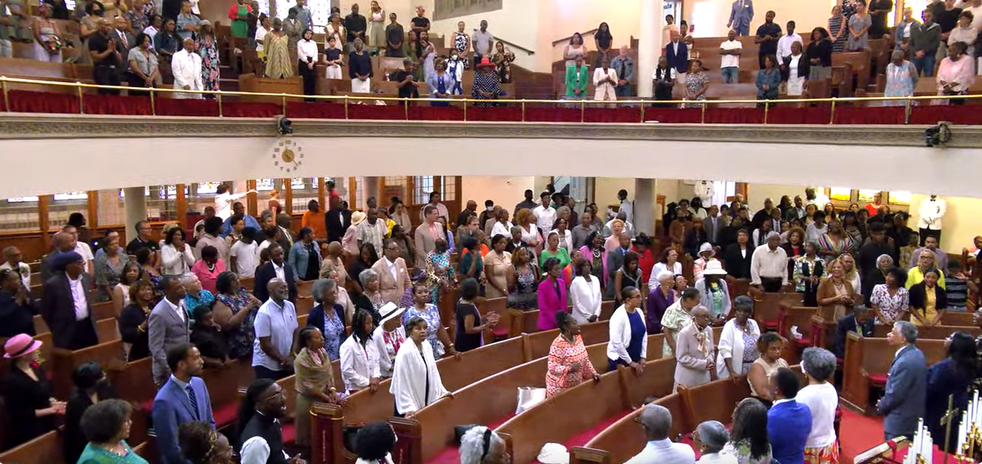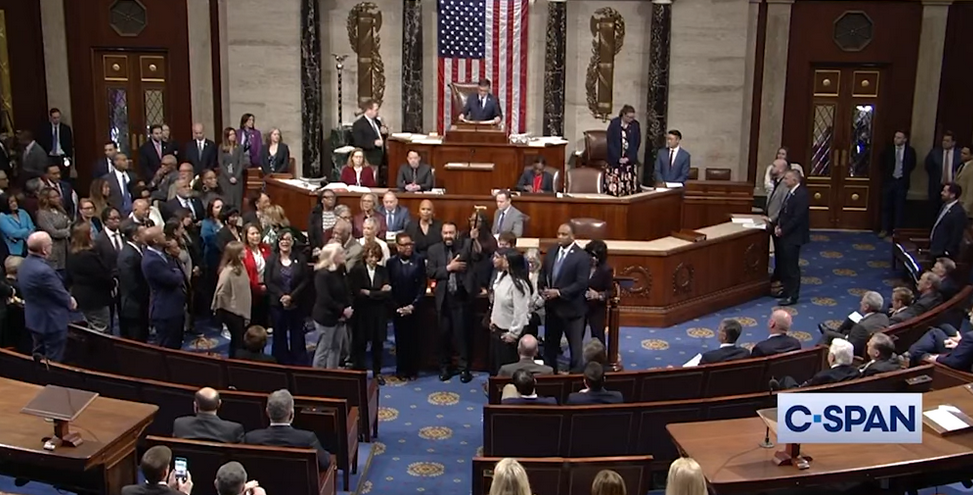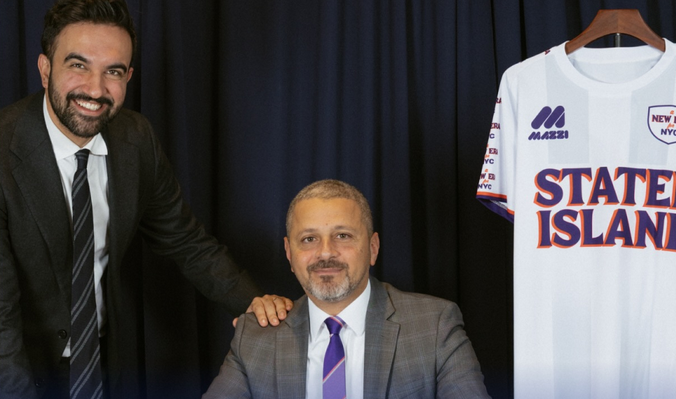[Transit News\ NYC Bus Redesign Program]
Riders Alliance member Latchmi Gopal: “We are happy that the MTA is redesigning all the routes, but in order for the MTA’s redesign to make a difference, we need to see Governor Cuomo commit the necessary funds to make this effort successful and reflective of the needs of the community. This kind of grand investment in our transit systems happens once every 50 years but it only works if the governor puts state money where his mouth is. Too often, the already marginalized members of this city aren’t treated fairly or given necessary public services. It is especially pertinent to invest in better transit for Black and Brown Communities.”
Photo: Riders Alliance
Bus riders, transit advocates, and elected officials from across New York City rallied Wednesday for more state funds for the MTA to deliver on the historic promise of its borough bus network redesigns.
Especially with congestion pricing coming in 2021, advocates called on Governor Cuomo to support additional service from neighborhoods with limited transit access. Earlier this month, the MTA rolled out its revised bus plan for the Bronx, which while speeding service by decreasing the number of stops, did not add revenue to increase frequency as advocates and elected leaders had demanded.
Riders Alliance member Latchmi Gopal said: “We are happy that the MTA is redesigning all the routes, but in order for the MTA’s redesign to make a difference, we need to see Governor Cuomo commit the necessary funds to make this effort successful and reflective of the needs of the community. This kind of grand investment in our transit systems happens once every 50 years but it only works if the governor puts state money where his mouth is. Too often, the already marginalized members of this city aren’t treated fairly or given necessary public services. It is especially pertinent to invest in better transit for Black and Brown Communities. And congestion pricing must be successful so we need investment to get as many people out of cars and onto buses as possible.”
More than two million New Yorkers depend on buses every day. Riders are overwhelmingly low-income New Yorkers of color. The elderly and people with disabilities also rely heavily on bus service, which is far more accessible than the subway. Faster bus trips, a core promise of the redesign program, afford riders better access to work and educational opportunities as well as medical and other services. Delivering better service for bus riders, rallygoers argued, is a core responsibility of state government and a test of progressive values.
Beginning in the Bronx, the MTA is mounting its first ever redesign of the entire bus network. Many existing routes date from 19th-century trolley tracks. Major job centers like LaGuardia Airport and Hunts Point Terminal Market were marshlands when the current network took shape. Now home to thousands of jobs, they remain difficult to access via public transit. First pushed by advocated with the Bus Turnaround Coalition, robust redesigns in each borough could afford considerably faster bus trips, saving millions of riders valuable time each day.
NYPIRG Straphangers Campaign Director Jaqi Cohen said: “Last spring, the MTA made a commitment to riders to overhaul the city’s bus network as part of the largest transformation of bus service in almost half a century. Yet the release of the Bronx bus plan has left riders concerned, particularly because it fails to provide service when and where many riders need transit most. The redesign of our city’s bus network is an opportunity for the MTA to finally give bus riders the fast, frequent, and dependable service they need, but it requires state investment to get it right.”
TransitCenter Advocacy Associate Ashley Pryce said: “In the Bronx, 20% of workers commute outside of the typical 9-5 schedule. That’s more than 100,000 people who need frequent, reliable bus service at night, long after the pm rush hour is over. The Bronx bus network redesign should improve trips for these workers. But under this plan, nighttime bus frequency on major routes like the Bx19 and Bx36 would remain 50 percent worse than on comparable routes in Toronto. NYCT needs additional funding to ensure that increased bus frequency becomes a reality and Governor Cuomo has the power to allocate the resources that will make these redesigns a success.”
“New Yorkers deserve a transportation network that prioritizes the most space-efficient modes. With a plan that prioritizes faster, more frequent service, the MTA could win back riders who gave up riding buses that were too slow and too infrequent,” said Transportation Alternatives Deputy Director Ellen McDermott. “We know what it takes to improve bus speeds; we just need the agencies responsible to make the decisions that put transit ahead of cars.”
“Transit is the great equalizer, yet we are still fighting for access in communities of color,” said Councilman I. Daneek Miller, Co-Chair of the Black, Latino/a, and Asian Caucus. “Southeast Queens, for example, remains a transit desert despite decades of promises, and any new bus redesign must take this into account. A cost-neutral plan amounts to consolidation and service cuts, as we’ve seen with the Bronx Redesign. We need to prioritize neighborhoods that have been historically underserved and secure additional funding to remedy this continued injustice.”
Senator Zellnor Y. Myrie (D-20) said: “The people in our community who rely on buses have lower incomes and higher rates of disability than everyone else. Yet these disadvantaged populations have for years had to rely on buses that suffer from delays, bunching, and overcrowding. It’s time for us to invest in our buses and build an equitable transportation system in Brooklyn.”
“To paraphrase the immortal lyrics of Boss Springsteen, you can’t restart a heart without a paddle, and you can’t resuscitate a bus system on life support without an infusion of capital and a commitment to maintain service and staffing levels,” said Assemblymember Linda B. Rosenthal (D/WF-Manhattan). “While the MTA’s postmortem of existing bus routes is welcome, slashing service in transit deserts that have been historically underserved by transit is not the answer. It’s vital that “Boss Byford” prioritize the creation of new, efficient bus routes and more frequent service in order to stabilize a system that New Yorkers depend on to get from point A to point B.”






